Joseph Manning Hatchery is located in Cedarville State Forest in Brandywine. The hatchery opened in 1980 and is named after Joseph Manning, former director of Tidewater Fisheries (a predecessor to The Fisheries Service).
Manning hatchery is situated on 180 acres of land which consists of 28 fish production ponds, two fish culture buildings, one water supply reservoir, a combination building (garage, shop, office and laboratory) and three water supply wells. The facility cultures warm water, cold water and anadromous species for stocking in Maryland waters including the Chesapeake Bay. Manning hatcheries current species of attention include: American Shad, Hickory Shad, Striped Bass, Largemouth Bass, Smallmouth Bass, Golden Shiners, Rainbow Trout, Yellow Perch, Hybrid Sunfish, Redear Sunfish, Green Sunfish, Walleye, Black Crappie, and Muskellunge.
Manning hatchery's primary culture building consists of spawning tanks, laboratory, culture tanks, raceways, brine shrimp culture tanks and a tagging room for tagging fish with coded wire tags (CWT). Fish are cultured using many methods, depending on the species. Propagation can be as simple as stripping fertilized eggs from mature females to more complex methods such as implanting fish with a hormone delivery system to induce spawning in hatchery tanks. Fish cultured at Manning hatchery are used to satisfy various program goals including restoration of fish populations and enhancement of recreational fishing opportunities.
Activity at this facility is seasonal and intensive, so general individual hatchery tours or visits cannot be accommodated. However, large groups can call the hatchery manager for potential tours.
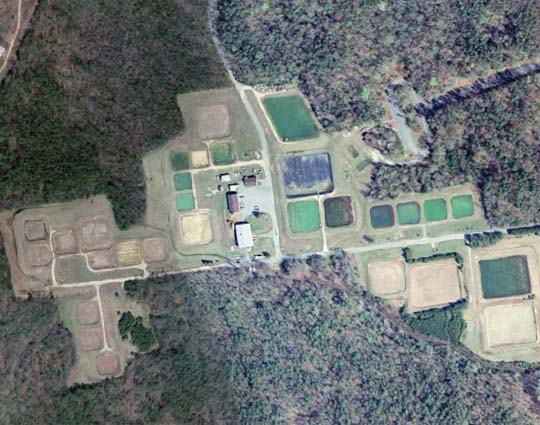
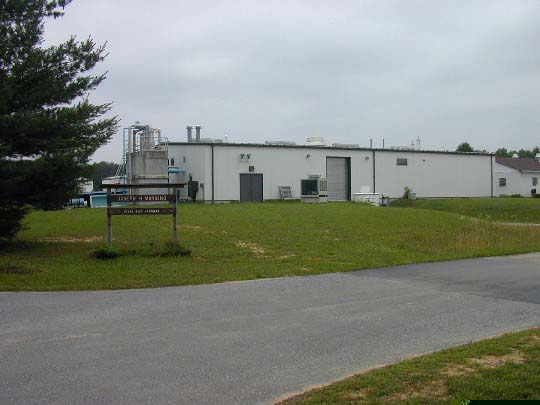
This is an exterior
photo of Manning Hatchery. There are two water sources available. Water
can be drawn from either an underground well or from an on site reservoir.
Water flows through the aerating tower on the left hand side of the building.
Detrimental dissolved gases such as nitrogen are removed in this tower.
At this time oxygen can be added to provide adequate water quality for fish
culture.
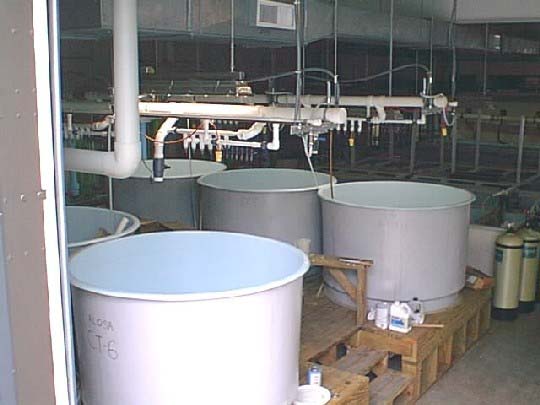
American shad and hickory
shad larvae are cultured in 5' diameter flow through tanks. Shad species
require circular flow to feed and grow properly. Chemical tagging with oxytetracycline
is also conducted in these tanks.
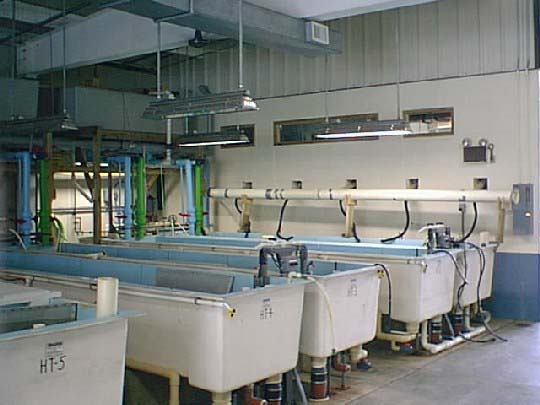
Troughs can be used
to culture larval fish of various species including striped bass, and yellow perch. Troughs can be operated as either flow through
or recirculating systems.
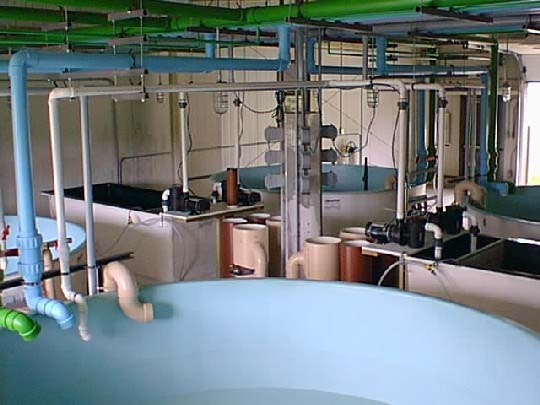
Spawning tanks are used
for shad reproduction. Fish are induced to spawn through
hormone therapy and eggs are transported in the water column to a collection
box. These systems can be operated in either flow through or recirculating
mode.

Diagram of a tank spawning system.

Brine shrimp, or Artemia
(a.k.a. Sea Monkeys) are cultured as fish food in these tanks. Brine
shrimp are an excellent starter food for many larval fish species.

This is the Manning
Hatchery tagging area. Juvenile fish can be implanted with
coded wire tags (CWT) so they can later be identified
as hatchery fish upon recapture in the waters of the Chesapeake Bay and
its tributaries. The CWT are one millimeter long metal tags that have a
numerical code etched on the surface. The presence of a CWT can be confirmed
only with a specialized CWT reader. Many fish species are wire tagged at
Manning Hatchery including striped bass, American shad, hickory shad, largemouth
bass and smallmouth bass.
For more information concering Manning Hatchery, contact Sean Knowles, Hatchery Manager, Joseph Manning Hatchery by phone at (301) 579-6215.
The contact number for the Hatchery is 410-271-0749.